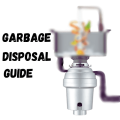Welcome to our guide on sink disposal parts! In this article, we will explore the various parts of a sink disposal unit. We will explain their functions and why they are important. By the end, you will know your sink disposal better and how to keep it running smoothly.
:max_bytes(150000):strip_icc()/visual-guide-of-a-garbage-disposal-1824882_V2-5394218eb74d4b949697be17ff05ea54.gif)
Credit: www.thespruce.com
What is a Sink Disposal?
A sink disposal, also called a garbage disposal, is a device under your kitchen sink. It helps break down food waste into small pieces. This makes it easier to wash away through the plumbing.
Main Parts of a Sink Disposal
Let’s look at the main parts of a sink disposal. Each part has a special job to keep your disposal working well.
1. Mounting Assembly
The mounting assembly is the part that attaches the disposal to your sink. It includes a mount ring, a cushion mount, and a mounting flange. This assembly keeps the disposal secure and prevents leaks.
2. Motor
The motor is the heart of the disposal. It powers the grinding process. Most motors are either 1/3, 1/2, 3/4, or 1 horsepower. The stronger the motor, the better it can handle tough food waste.
3. Grinding Chamber
The grinding chamber is where the food waste is broken down. It contains impellers that spin and push the waste against a grind ring. This action grinds the waste into tiny particles.
4. Grind Ring
The grind ring works with the impellers to break down food waste. It has sharp edges that help shred the waste into small pieces.
5. Impellers
The impellers are metal parts that spin inside the grinding chamber. They push the food waste against the grind ring. This action helps break the waste into tiny particles.
6. Flywheel
The flywheel is attached to the motor shaft. It spins the impellers and helps with the grinding process. The flywheel ensures the grinding process is smooth and efficient.
7. Upper And Lower Bearings
The upper and lower bearings support the motor shaft. They help the flywheel and impellers spin smoothly. These bearings reduce friction and wear, extending the life of your disposal.
8. Splash Guard
The splash guard is a rubber piece at the top of the disposal. It prevents water and food particles from splashing out. The splash guard also helps reduce noise from the grinding process.
9. Reset Button
The reset button is a safety feature on the bottom of the disposal. If the disposal overheats or jams, the reset button will trip. Pressing the reset button will restart the disposal once the issue is resolved.
10. Power Cord
The power cord connects the disposal to an electrical outlet. It supplies the power needed for the motor to run. Some disposals come with a power cord, while others require you to purchase one separately.
11. Drain Outlet
The drain outlet is where the ground-up food waste exits the disposal. It connects to your kitchen sink’s plumbing. This ensures the waste is washed away properly.
12. Dishwasher Inlet
The dishwasher inlet allows you to connect your dishwasher to the disposal. This helps dispose of food particles from the dishwasher, keeping your sink clean and clog-free.
How to Maintain Your Sink Disposal
Proper maintenance can help extend the life of your sink disposal. Here are some tips to keep it in good working order:
- Run cold water: Always run cold water when using the disposal. This helps solidify any grease or fat, making it easier to grind.
- Use it regularly: Frequent use prevents rust and corrosion. It also helps keep parts moving smoothly.
- Clean it: Use a mixture of baking soda and vinegar to clean the grinding chamber. This helps remove any buildup and keeps it smelling fresh.
- Avoid hard items: Do not put hard items like bones or fruit pits in the disposal. These can damage the impellers and grind ring.
- Grind small pieces: Cut large food waste into smaller pieces before putting them in the disposal. This makes the grinding process easier and more efficient.
Common Sink Disposal Issues and Solutions
Even with proper care, you may encounter some issues with your sink disposal. Here are common problems and how to fix them:
1. Disposal Won’t Turn On
If your disposal won’t turn on, check the power supply. Make sure the power cord is plugged in. If it is, press the reset button. If it still doesn’t work, check your circuit breaker.
2. Disposal Is Jammed
If the disposal is jammed, turn it off and unplug it. Use a wrench to turn the flywheel manually. This can help dislodge any stuck food waste.
3. Disposal Is Leaking
If your disposal is leaking, check the mounting assembly and drain connections. Tighten any loose connections. If the leak persists, you may need to replace a gasket or seal.
4. Disposal Is Noisy
If your disposal is making strange noises, it may be due to a foreign object. Turn off the disposal and remove the object carefully. If the noise continues, check the impellers and grind ring for damage.
Frequently Asked Questions
What Are Sink Disposal Parts?
Sink disposal parts include the motor, blades, and splash guard.
How Do I Replace A Sink Disposal Part?
Turn off power, remove old part, and install new part.
Why Is My Sink Disposal Leaking?
A leaking disposal might have a loose seal or cracked part.
How Often Should Sink Disposal Parts Be Replaced?
Replace parts every 3-5 years or as needed.
Conclusion
Understanding the parts of your sink disposal can help you keep it running smoothly. Regular maintenance and proper use will extend its life. If you encounter any issues, follow our tips to troubleshoot and fix them. With this knowledge, your sink disposal will be a reliable kitchen helper for years to come.


